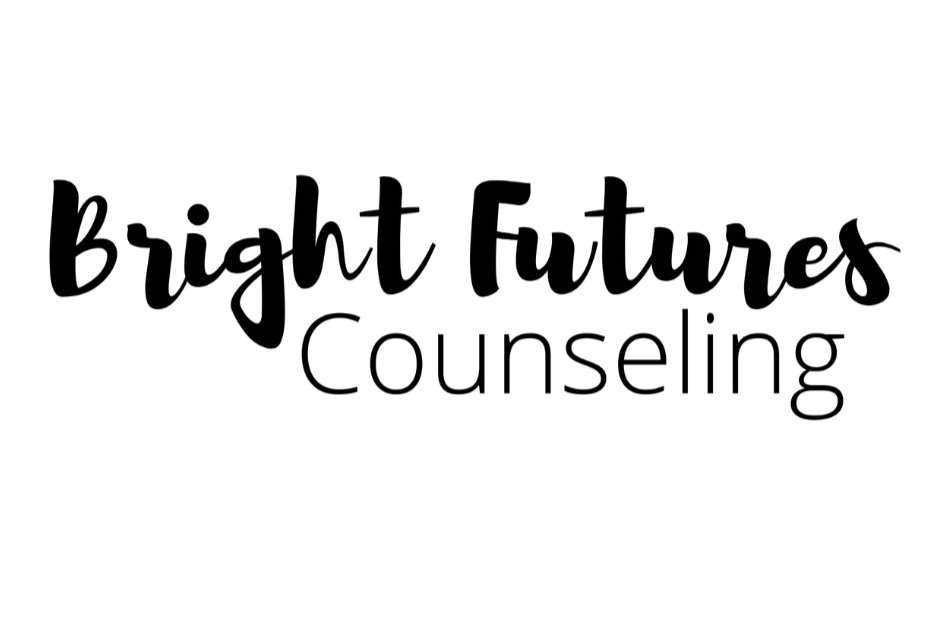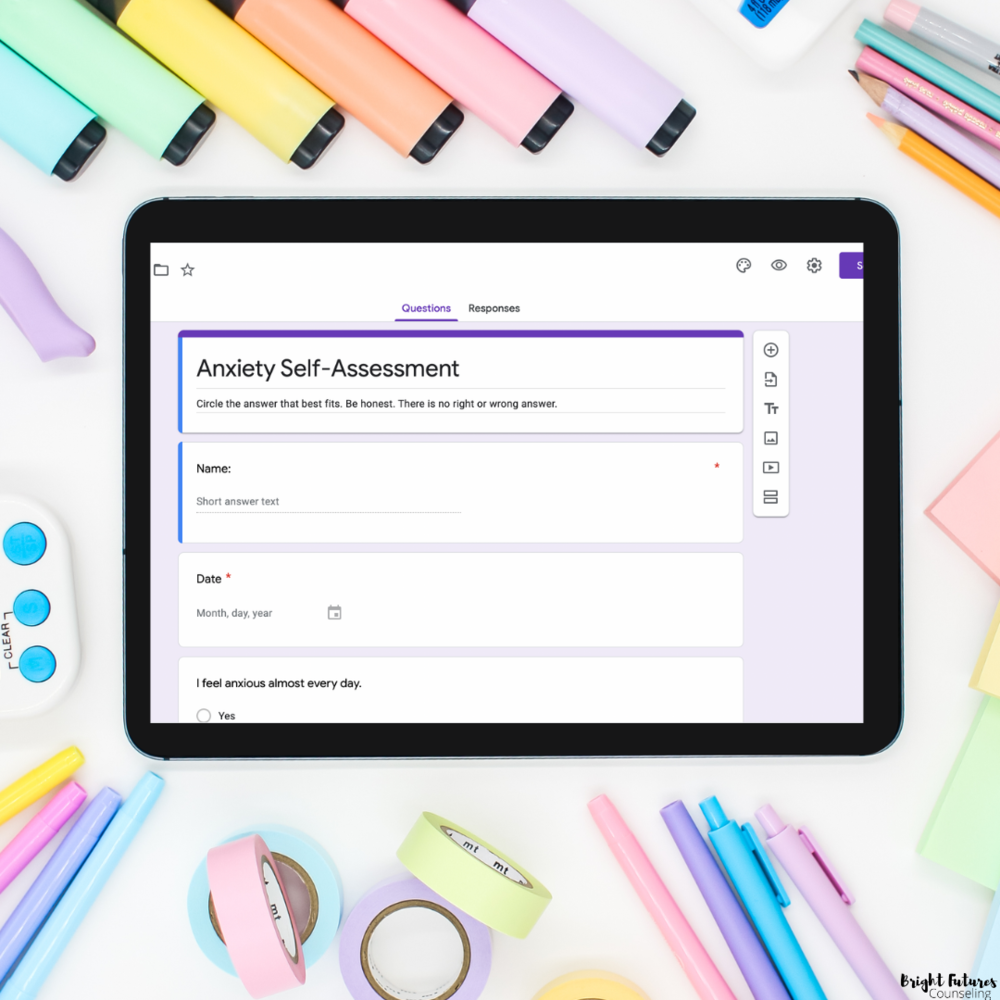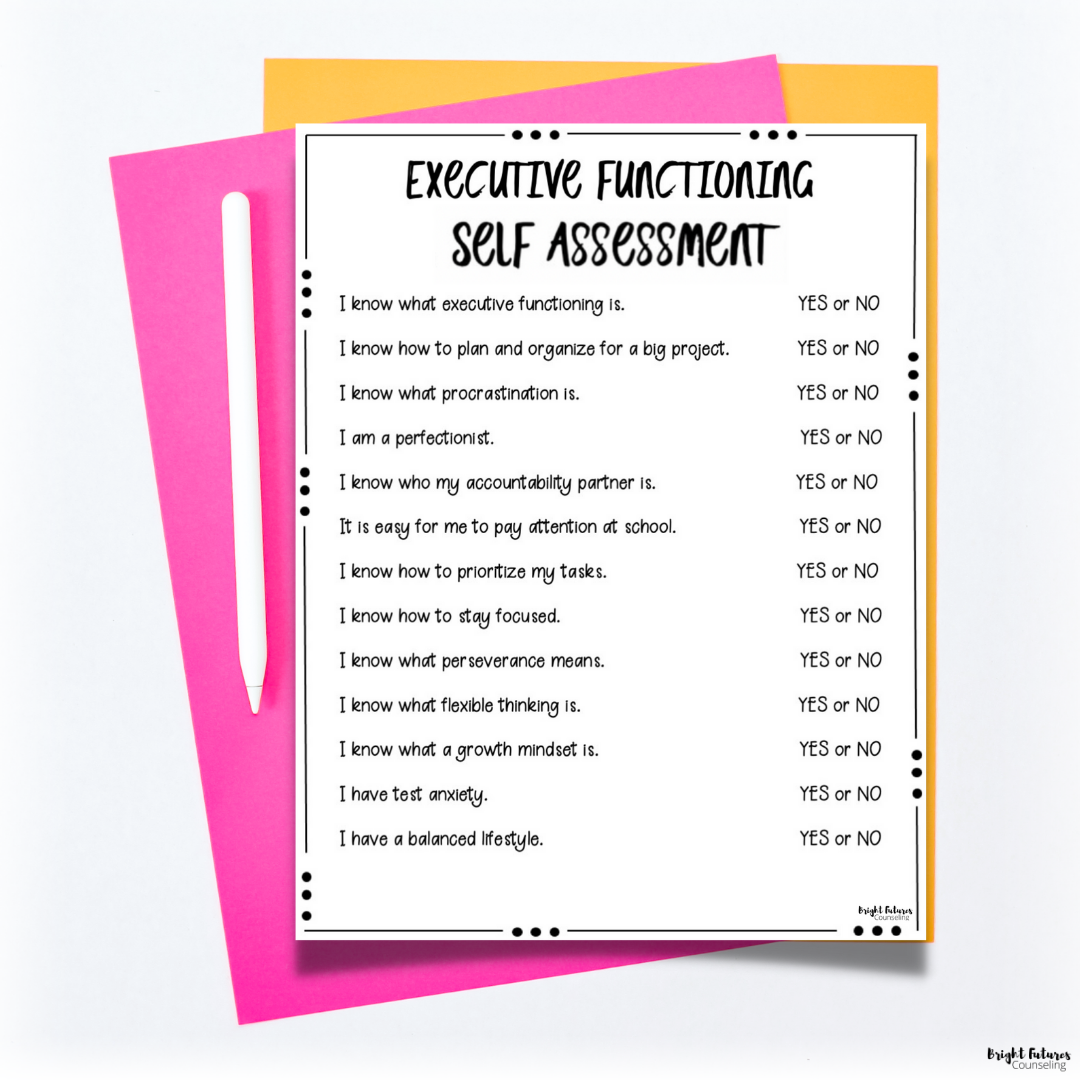How to Track School Counseling Data
Data collection is vital to the success of your school counseling program. It's a way for you to showcase student progress and identify student needs. Tracking data can seem overwhelming at first but I’ve got you covered with these easy tools.
School Counseling Data Collection Tool: Needs Assessment
The first tool I want to mention is a needs assessment. You've likely heard me talk about needs assessments before. I am super passionate about using them to start your year off right!
So what is a needs assessment? It's exactly what it sounds like, a great way for assessing the needs of your student population. If you are a first-year counselor or new to your school this is a must-do right away! Send a few questions out to teachers and staff to assess student needs and determine which topics to base your small groups and guidance lessons around.
Here are some things to ask teachers.
Services they think the school is in need of:
guidance lessons
teacher training
parent workshops
groups
character ed activities
Topics that need to be covered:
self-regulation
growth mindset
conflict resolution
bullying prevention
cyber safety
Check out my needs assessment here.
If it's not your first year counseling, you can also ask for feedback on your program. Ask your admin and teachers what they think went well and where the counseling program could improve. It can be hard not to take the criticisms personally if you are the only counselor at your site and the "program" is just you. But the feedback is invaluable and will help you reach more students effectively. Needs assessments are a great tool to use every year even if you are a returning veteran counselor!
School Counseling Data Collection Tool: Progress Monitoring Scales
The next data collection tool I want to share is progress monitoring scales.
Progress monitoring scales, or behavior surveys, are a way to survey teachers and parents to see how effective your counseling services have been. It's best to use these before and after counseling sessions. This way you can see how students have improved or if they've not shown progress you can re-evaluate your counseling and intervention plan.
Why use them?
It is super important to track students’ progress after seeing them for several weeks individually or in a group. Especially if you’ve been pulling them out of class! Your stakeholders want to see that the sessions are beneficial to the student’s wellbeing. I send these to parents and teachers before and after each group. Throw them in with your permission slips so you won’t forget!
Counseling virtually?
I used to put the paper copies in teacher's boxes but a digital form saves time and trees, plus it's editable so you can modify the questions and topics. I recently updated my behavior surveys to include a Google Forms version. Check it out here.
My school counseling office bundle is a great place to start for must-have data collection forms.
School Counseling Data Collection Tool: Self-Assessments
The third data collection tool I like to use is self-assessments.
Self-assessments are a great way for students to reflect on their own progress. I use them before and after each group and sometimes with students I see individually. You can have students fill them out on paper and then record the data digitally yourself or set it up in Google Forms so the data is recorded automatically. This is a great option for distance learning plus they already have the responses organized in a nice spreadsheet for you so you can later use the data to create graphs, tables, etc. (Can you tell I love Google Forms?!)
Self-assessments are a simple way to measure your program's effectiveness. At the beginning of each group or individual session ask students to fill out a pre-counseling self-assessment on the topic you will be working on with them. During their last session, have them complete the same self-assessment. Compare the results to see where progress has been made. Simple as that!
Check out all of my self-assessments here!
School Counseling Data Collection Tool: Motivation Assessments
The fourth data collection tool I want to share is how to use motivation assessments.
Using a Motivation Assessment Scale
A motivation assessment scale is a form where teachers or parents answer questions to identify possible motivators behind a behavior. I like to use this one from the Suffolk Child Development Center. After adding up the responses, the sum will indicate 1 of 4 motivators; sensory, escape, social attention, or tangible consequences. Your student support team can then use this information to decide next steps. This survey is extra helpful if given to several adults the student works with that way you can see if the behavior and motivators are varied in different settings.
Using a Motivation Assessment Survey
A motivation assessment survey is used when you sit down with a student to discuss what they find motivating. Start by asking students what they would like to work toward or earn as a reward. You can even make it into a fun quiz to see what type of category their motivators fall into. You can jot this on paper or create a digital form. Completing the survey digitally makes data collection super easy.
Examples of Motivators and Categories:
Attention - Students who are motivated by attention feel special when they get to spend time with an adult at school. Example: They can play a game with the counselor during lunch.
Leadership - Students who are motivated by leadership feel special when they get to make big decisions that benefit others. Example: They can choose which book the class reads.
Physical Rewards - Students who are motivated by physical rewards feel special when they get a tangible or treat. Example: They can earn a sticker or their favorite snack.
Creative Outlet - Students who are motivated by a creative outlet feel special when they get to express themselves artistically. Example: They can work on an art project
School Counseling Data Collection Tool: End of the Year Report
The last data collection tool I want to mention is an end of the year report.
What is an End of the Year Report?
An End of the Year Report is exactly what it sounds like. A report you create at the end of the year to show how many students you served, how many guidance lessons you taught, and even how much time you spent with students! You can use it to show anything; student self-assessment and survey data, behavior progress individual students made, etc.
Why use an End of the Year Report?
It is a great way to reflect on your program’s progress and feel proud of all of your hard work! This is where you will showcase the data you’ve been collecting all year. Your stakeholders can see what’s working (and sometimes what’s not!). This way you can modify your program to best fit all student needs.
How do I create an End of the Year Report?
Everyone’s will look a little different, but start by gathering any data you have and compiling it in a report. You can do text only or create charts and graphs to show student progress.
Where to collect data from:
Student self-assessments
Teacher/parent feedback
Observations
Pre and post group surveys
Progress monitoring scales
Sounds cool, but what if it's the beginning of the year...
Even better! Start collecting data now by using the aforementioned tools so at the end of the year it will be super simple to display in your report. Read this blog post for details on how to start collecting data! OR you can use it at the end of the calendar year instead of the end of the school year!
Take a look at my editable end of the year report here.
Are you ready to start collecting data yet?







